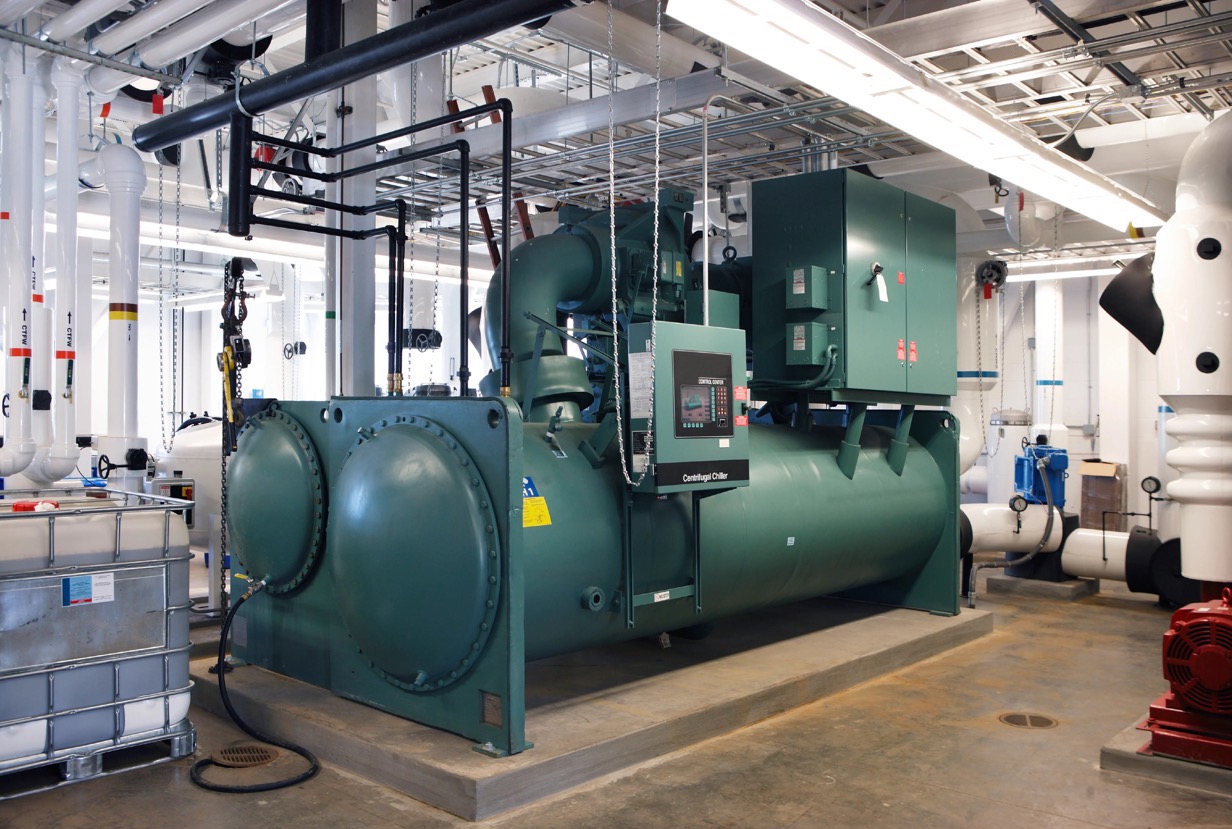

Articles
How A Chiller Works In HVAC
Modified: December 7, 2023
Learn how a chiller works in HVAC systems with our informative articles. Explore the process and benefits of using a chiller for efficient cooling.
(Many of the links in this article redirect to a specific reviewed product. Your purchase of these products through affiliate links helps to generate commission for Storables.com, at no extra cost. Learn more)
Introduction
Welcome to the world of HVAC (Heating, Ventilation, and Air Conditioning) systems, where comfort and efficiency go hand in hand. One crucial component of an HVAC system is the chiller, which plays a vital role in cooling buildings, industrial processes, and various other applications.
A chiller is a refrigeration system that removes heat from a space or an object using a cycle of compression, condensation, expansion, and evaporation. It uses a refrigerant as the working fluid to absorb and dissipate heat, providing chilled water or air to cool down the desired area.
In this article, we will delve into the inner workings of a chiller, explore its basic components, understand its operation, discuss different types of chillers, and touch upon efficiency, maintenance, and troubleshooting.
Whether you are an HVAC professional, building owner, or someone who simply wants to learn more about chiller technology, this article is for you. So, let’s dive in and uncover the fascinating world of how a chiller works!
Key Takeaways:
- Understanding the inner workings of a chiller, including its components, refrigeration cycle, and operation, is crucial for optimizing its performance and ensuring efficient cooling for various applications within HVAC systems.
- Implementing energy-saving measures, regular maintenance, and prompt troubleshooting, along with seeking professional assistance when needed, can significantly enhance chiller efficiency, reduce energy consumption, and prolong its lifespan.
Read more: How Does The HVAC System Work
The Basic Components of a Chiller
A chiller consists of several essential components that work together to facilitate the cooling process. Understanding these components is crucial to comprehending how a chiller operates. Let’s take a closer look at each one:
1. Compressor
The compressor is like the heart of the chiller system. It is responsible for compressing the refrigerant vapor, raising its pressure, and thus increasing its temperature. The compressor is typically powered by an electric motor and can be of various types, including reciprocating, centrifugal, and screw compressors. Its primary function is to circulate the refrigerant through the system and maintain the necessary pressure difference between the evaporator and condenser.
2. Evaporator
The evaporator is where the cooling magic happens. This component facilitates the heat transfer process by evaporating the liquid refrigerant into a gas. As the warm return chilled water or air flows over the evaporator coils, the refrigerant absorbs heat from it, causing the refrigerant to evaporate and turn into a low-pressure, low-temperature vapor. The evaporator acts as a heat exchanger, ensuring efficient transfer of heat from the water or air to the refrigerant.
3. Condenser
In the condenser, the hot refrigerant vapor from the compressor is condensed back into a liquid state. The condenser achieves this by transferring the heat absorbed from the evaporator to the cooling medium, which can be either water or air. As the refrigerant cools down, it releases its stored heat energy to the surroundings, allowing it to condense. The condenser is another crucial heat exchanger that plays a vital role in rejecting heat from the chiller system.
Read more: How Does A Split System HVAC Work
4. Expansion Valve
The expansion valve regulates the flow of the refrigerant between the high-pressure condenser and the low-pressure evaporator. Its main function is to create a pressure drop in the refrigerant, causing it to expand and cool down rapidly, transitioning it from a high-pressure liquid to a low-pressure, low-temperature mixture. The expansion valve helps to maintain the necessary pressure and temperature conditions for the refrigeration cycle to proceed smoothly.
These four components: compressor, evaporator, condenser, and expansion valve, form the core of a chiller system. Working together, they facilitate the continuous flow of refrigerant, allowing heat to be absorbed from the chilled water or air and transferred to the condenser for dissipation. Understanding the role of these components is essential for grasping how a chiller operates.
The Refrigeration Cycle
The refrigeration cycle is the fundamental process that takes place within a chiller to provide cooling. It is a continuous loop that repeats itself to maintain the desired temperature. Let’s explore the four key steps of the refrigeration cycle:
Step 1: Compression
The refrigeration cycle begins with the compressor. It draws in the low-pressure, low-temperature refrigerant vapor from the evaporator and compresses it, increasing its pressure and temperature. This compression raises the refrigerant’s energy level, allowing it to effectively absorb heat during the subsequent stages of the process.
Step 2: Condensation
The next step is condensation, where the hot, high-pressure refrigerant vapor from the compressor enters the condenser. Here, the refrigerant gives off its absorbed heat to the cooling medium, which can be water or air. As the refrigerant cools down, it undergoes a phase change, transitioning from a vapor to a liquid state. The condenser’s primary function is to facilitate heat dissipation and ensure efficient cooling of the refrigerant.
Read more: How Do Commercial HVAC Systems Work
Step 3: Expansion
After condensation, the high-pressure liquid refrigerant moves to the expansion valve. The expansion valve creates a pressure drop in the refrigerant, causing it to rapidly expand. As the refrigerant expands, its temperature decreases significantly, resulting in a low-pressure, low-temperature mixture. This step prepares the refrigerant for the next stage of the cycle, where it will absorb heat and undergo evaporation.
Step 4: Evaporation
The final step of the refrigeration cycle is evaporation, which takes place in the evaporator. In this component, the low-pressure, low-temperature refrigerant absorbs heat from the surrounding chilled water or air. As the refrigerant absorbs heat, it undergoes a phase change, transitioning from a liquid to a vapor state. This process of evaporation allows the chiller to remove heat from the desired space or object, effectively cooling it down.
These four steps of the refrigeration cycle – compression, condensation, expansion, and evaporation – work together to create a continuous flow of cooling. The cycle repeats itself to maintain the desired temperature and ensure efficient and effective cooling within the chiller system.
Types of Chillers
Chillers come in various types, each designed to meet specific cooling requirements and operating conditions. Let’s explore two common types of chillers:
Air-Cooled Chillers
Air-cooled chillers are a popular choice for cooling applications where water availability or cost is a constraint. As the name suggests, these chillers use air as the cooling medium to dissipate heat from the refrigerant. They feature an air-cooled condenser that utilizes a fan or fans to draw ambient air over condenser coils, allowing heat transfer from the refrigerant to the air.
One of the main advantages of air-cooled chillers is that they do not require a separate cooling tower or water source for condensation, saving on water consumption and installation costs. They are also relatively easier to install and maintain compared to water-cooled chillers. However, air-cooled chillers tend to have lower efficiency compared to their water-cooled counterparts, making them more suitable for smaller applications or locations with moderate cooling requirements.
Read more: Why Is My HVAC Fan Not Working
Water-Cooled Chillers
Water-cooled chillers, on the other hand, utilize water as the cooling medium for heat dissipation. These chillers typically consist of a water-cooled condenser, which exchanges heat with a separate cooling tower or a water source, such as a river or a well. The condenser transfers heat from the refrigerant to the water, which is then circulated to the cooling tower or source, where it releases heat to the environment.
Water-cooled chillers offer several benefits, including higher efficiency and better performance in larger-scale cooling applications. They can handle higher heat loads and provide more precise temperature control. However, water-cooled chillers require additional infrastructure, such as cooling towers and water distribution systems, which can add to the installation and maintenance costs. Additionally, these chillers consume a significant amount of water, making them more suitable for areas with sufficient water availability.
Choosing between air-cooled and water-cooled chillers depends on factors like cooling requirements, space availability, water availability, energy efficiency goals, and budget constraints. Working closely with an HVAC professional can help determine the most suitable type of chiller for a specific application.
Chiller Operation
Understanding how a chiller operates is essential for optimizing its performance and ensuring proper cooling. Let’s explore the key aspects of chiller operation:
Startup Process
The startup process of a chiller involves several key steps to ensure its proper functioning. Before starting the chiller, the operator must check the system for any leaks, inspect electrical connections, and verify that all safety measures are in place. Once everything is in order, the chiller can be started up, and the compressor, condenser, and evaporator fans or pumps are activated. The chiller’s control system monitors and regulates the various operating parameters to maintain optimal performance.
Chilled Water Generation
Chilled water generation is a primary function of a chiller. The chiller system produces cold water, which is used to cool down various components or spaces. In water-cooled chillers, the water is circulated through the evaporator, where it absorbs heat and undergoes a temperature drop. The chilled water is then pumped out to the desired location or equipment, where it absorbs heat and provides cooling. In air-cooled chillers, the chilled air is directly blown into the space or equipment that requires cooling.
Read more: How Does A Gas Pack HVAC System Work
Heat Transfer
Heat transfer is a crucial aspect of chiller operation. The chiller’s evaporator plays a significant role in heat transfer, where the refrigerant absorbs heat from the chilled water or air, causing it to evaporate. This heat transfer process allows the chiller to remove heat from the desired space or object. In water-cooled chillers, the heat is transferred from the chilled water to the refrigerant, while in air-cooled chillers, the heat is transferred from the air to the refrigerant.
Refrigerant Circulation
The refrigerant circulation is an essential component of chiller operation. The refrigerant, which undergoes phase changes from a vapor to a liquid and vice versa, circulates through different components of the chiller system. It moves from the compressor to the condenser, where it releases heat and condenses into a liquid state. The liquid refrigerant then passes through the expansion valve, where it expands and cools down before entering the evaporator. Finally, it absorbs heat in the evaporator, turning back into a vapor and completing the refrigeration cycle.
Proper chiller operation involves maintaining the desired temperature and ensuring optimal performance. Regular monitoring, preventive maintenance, and adherence to manufacturer guidelines are crucial to promote efficient chiller operation and extend its lifespan.
Chiller Efficiency and Energy Usage
Chiller efficiency plays a vital role in maximizing cooling performance while minimizing energy usage and operating costs. Let’s explore some key factors related to chiller efficiency:
Coefficient of Performance (COP)
The Coefficient of Performance (COP) is a measure of chiller efficiency and represents the amount of cooling provided per unit of energy consumed. COP is calculated by dividing the cooling output (in BTUs or kilowatts) by the energy input (in BTUs or kilowatts). A higher COP indicates better efficiency, as more cooling is provided per unit of energy consumed. Energy-efficient chillers typically have higher COP values.
Factors Affecting Chiller Efficiency
Several factors affect chiller efficiency, including design, operating conditions, maintenance, and control strategies. Some of the key factors influencing chiller efficiency are:
- Chiller Load: Chillers operate most efficiently when they are running near their design load. Operating at partial loads can reduce efficiency.
- Chiller Type: Different types of chillers have varying efficiencies. For example, newer chillers with advanced technologies, such as variable speed drives, tend to be more efficient.
- Condenser Water Temperature: Higher condenser water temperatures can reduce chiller efficiency. Optimizing condenser water temperature can help improve efficiency.
- Evaporator Water Temperature: Lower evaporator water temperatures generally improve chiller efficiency. However, excessively low temperatures can increase energy consumption.
- Refrigerant Type: The choice of refrigerant can impact chiller efficiency. Environmentally friendly refrigerants with low global warming potential (GWP) tend to be more efficient.
- Maintenance: Regular maintenance, including cleaning condenser and evaporator coils, checking refrigerant levels, and lubricating moving parts, ensures optimal chiller performance and efficiency.
Energy-Saving Measures
To improve chiller efficiency and reduce energy usage, various energy-saving measures can be implemented:
- Chiller Sizing: Properly sizing the chiller based on cooling requirements helps eliminate oversized or undersized units, improving efficiency.
- Chilled Water Temperature Setpoint Optimization: Adjusting the chilled water temperature setpoint to the minimum required for the application can save energy by reducing the chiller’s workload.
- Variable Speed Drives (VSD): Using VSD technology to control the speed of the chiller’s compressor and other components allows for better matching of cooling demand, reducing energy consumption.
- Optimized Chiller Sequencing: Proper sequencing of multiple chillers can optimize their usage based on load requirements, avoiding unnecessary energy consumption.
- Heat Recovery: Utilizing waste heat recovered from the chiller for other applications, such as water heating or space heating, can minimize energy waste and improve overall efficiency.
- Monitoring and Control Systems: Implementing advanced monitoring and control systems can help optimize chiller operation, identify inefficiencies, and make necessary adjustments to improve energy performance.
By implementing these energy-saving measures and considering factors that affect chiller efficiency, it is possible to achieve significant energy savings while maintaining optimal cooling performance.
Chiller Maintenance and Troubleshooting
Maintaining and troubleshooting a chiller system is crucial to ensure its optimal performance, prolong its lifespan, and prevent costly downtime. Let’s explore some key aspects of chiller maintenance and troubleshooting:
Regular Maintenance Procedures
Regular maintenance is essential to keep the chiller operating efficiently. Some common maintenance procedures include:
- Cleaning: Regularly clean the condenser and evaporator coils to remove dust, dirt, and debris that can hinder heat transfer and reduce chiller efficiency.
- Checking Refrigerant Levels: Periodically check and maintain the proper refrigerant levels to ensure optimal performance and prevent issues such as inadequate cooling capacity.
- Lubricating Moving Parts: Properly lubricate bearings, motors, and other moving parts to minimize friction and reduce wear and tear.
- Checking Electrical Connections: Inspect and tighten electrical connections to prevent loose connections that can lead to electrical issues or equipment damage.
- Inspecting Water Treatment: Regularly check and maintain water treatment systems to prevent scaling, fouling, and microbial growth that can impact chiller performance and efficiency.
Read more: How Does HVAC System Work In Home
Common Issues and Troubleshooting Tips
Despite regular maintenance, chiller issues may still arise. Here are a few common issues and some troubleshooting tips:
- Inadequate Cooling: If the chiller is not providing sufficient cooling, check condenser and evaporator cleanliness, refrigerant levels, and water flow rates.
- High Energy Consumption: Excessive energy consumption can be caused by factors like fouled condenser coils, inadequate water flow, or improper refrigerant charge.
- Leakage: Water or refrigerant leaks can occur due to corroded pipes, faulty seals, or loose connections. Inspect the system carefully to identify the source of the leak and repair it promptly.
- Abnormal Noises: Unusual noises can indicate issues with motors, compressors, or other mechanical components. Address these issues promptly to prevent further damage.
- Temperature Fluctuations: If the chiller is experiencing temperature fluctuations, check for issues such as faulty sensors, control settings, or water flow problems.
Importance of Professional Inspection and Servicing
While regular maintenance and troubleshooting can address many chiller issues, it is important to involve professionals for thorough inspections and servicing. HVAC professionals have the expertise, knowledge, and specialized tools to diagnose complex issues, perform comprehensive system checks, and ensure compliance with safety standards. Regular professional inspections can help identify potential problems before they escalate, optimize chiller performance, and extend its lifespan.
Remember, a well-maintained chiller system is more likely to operate efficiently, experience fewer breakdowns, and provide reliable cooling. By following regular maintenance protocols, troubleshooting issues promptly, and seeking professional assistance when needed, you can ensure that your chiller operates smoothly and effectively for years to come.
Conclusion
Chillers play a crucial role in HVAC systems, providing efficient cooling for various applications. Understanding how a chiller works and implementing proper maintenance and troubleshooting practices is essential to optimize its performance, improve energy efficiency, and extend its lifespan.
We explored the basic components of a chiller, including the compressor, evaporator, condenser, and expansion valve. These components work together in a refrigeration cycle that involves compression, condensation, expansion, and evaporation.
There are different types of chillers available, including air-cooled and water-cooled chillers. The choice depends on factors such as water availability, space constraints, and cooling requirements.
Chiller operation involves the startup process, chilled water generation, heat transfer, and refrigerant circulation. Understanding these aspects helps ensure proper functioning and optimal cooling performance.
Chiller efficiency and energy usage are critical considerations. The coefficient of performance (COP) measures chiller efficiency, while factors like chiller load, type, condenser and evaporator water temperatures, refrigerant type, and regular maintenance impact efficiency. Implementing energy-saving measures can further enhance chiller efficiency and reduce energy consumption.
Maintaining and troubleshooting a chiller is vital to prevent issues, ensure proper operation, and minimize downtime. Regular maintenance procedures, such as cleaning, checking refrigerant levels, lubricating parts, and inspecting water treatment systems, are essential. Troubleshooting common issues, including inadequate cooling, high energy consumption, leakage, abnormal noises, and temperature fluctuations, helps address problems promptly.
While regular maintenance and troubleshooting are beneficial, involving professionals for inspections and servicing is highly recommended. HVAC professionals have the expertise and specialized tools to diagnose complex issues, perform comprehensive system checks, and ensure compliance with safety standards.
In conclusion, by understanding how a chiller works, implementing proper maintenance and troubleshooting practices, and seeking professional assistance when needed, you can ensure that your chiller operates efficiently, reliably, and effectively, providing optimal cooling for your specific applications.
Frequently Asked Questions about How A Chiller Works In HVAC
Was this page helpful?
At Storables.com, we guarantee accurate and reliable information. Our content, validated by Expert Board Contributors, is crafted following stringent Editorial Policies. We're committed to providing you with well-researched, expert-backed insights for all your informational needs.
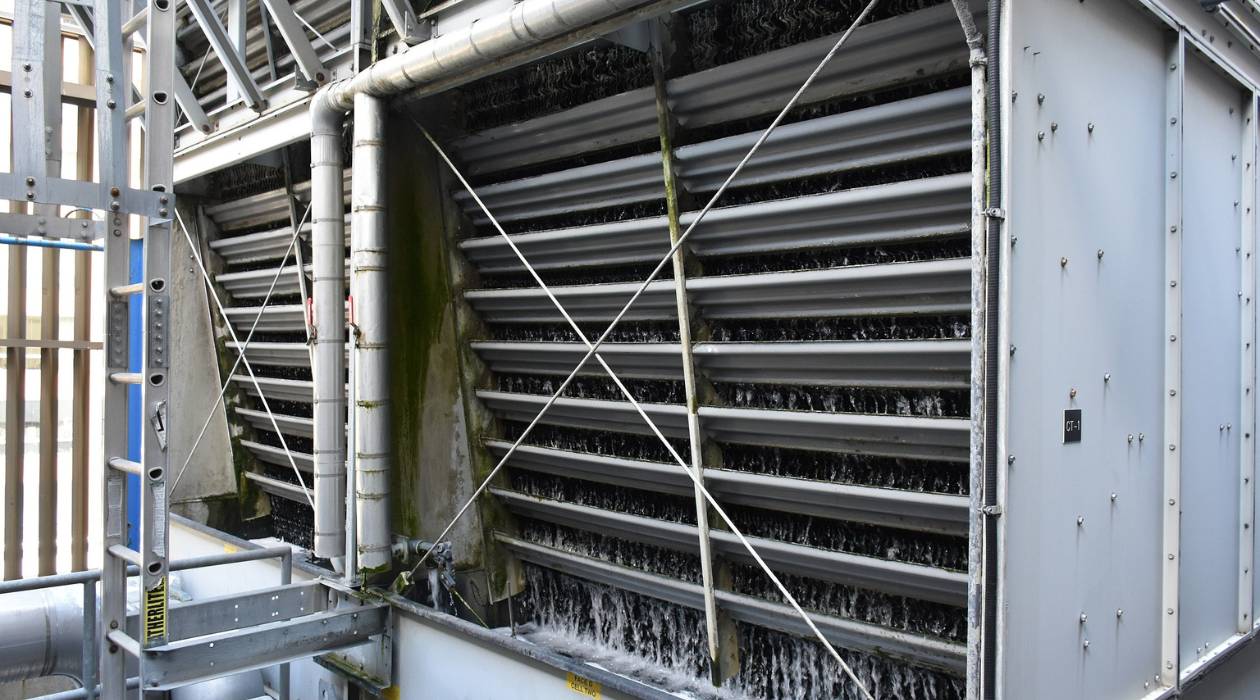
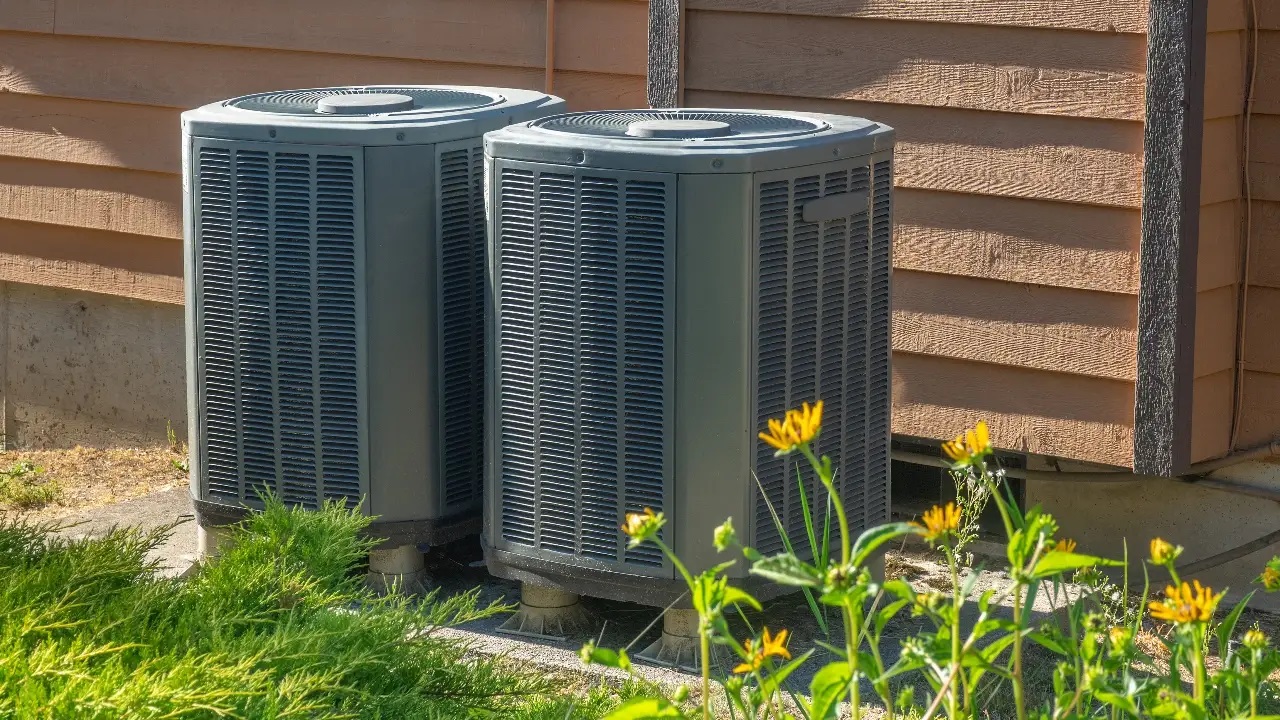
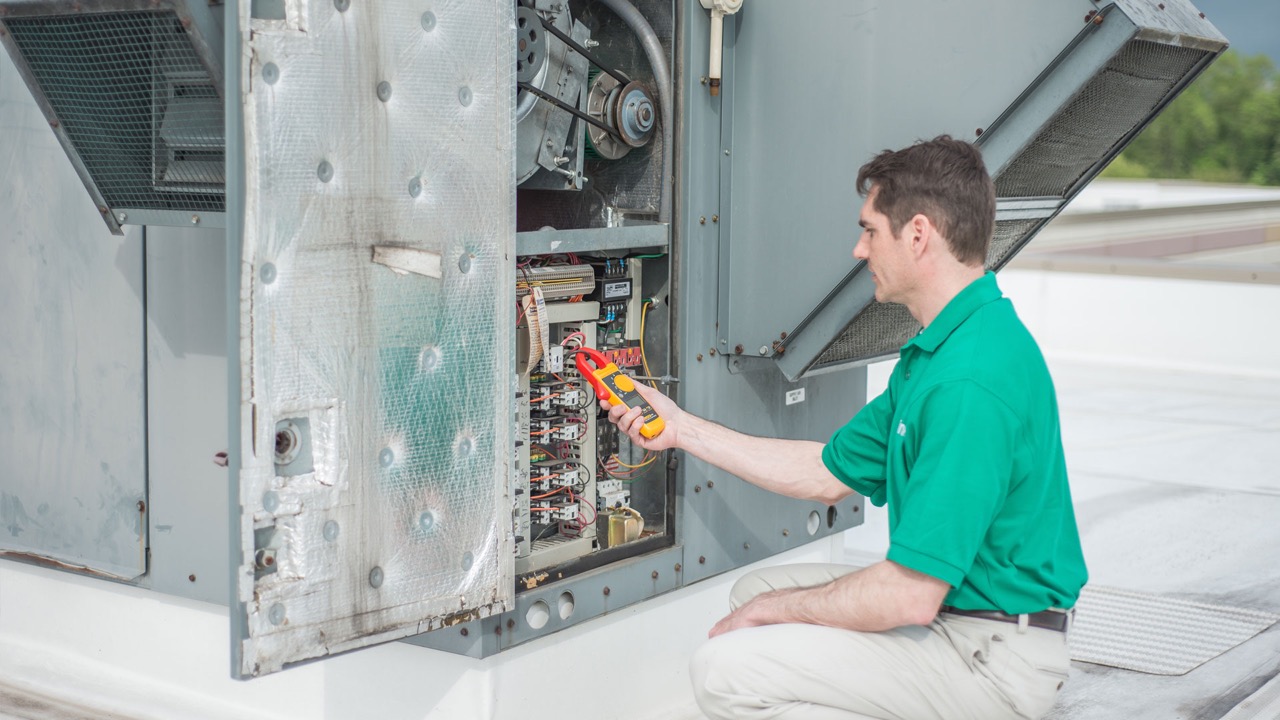
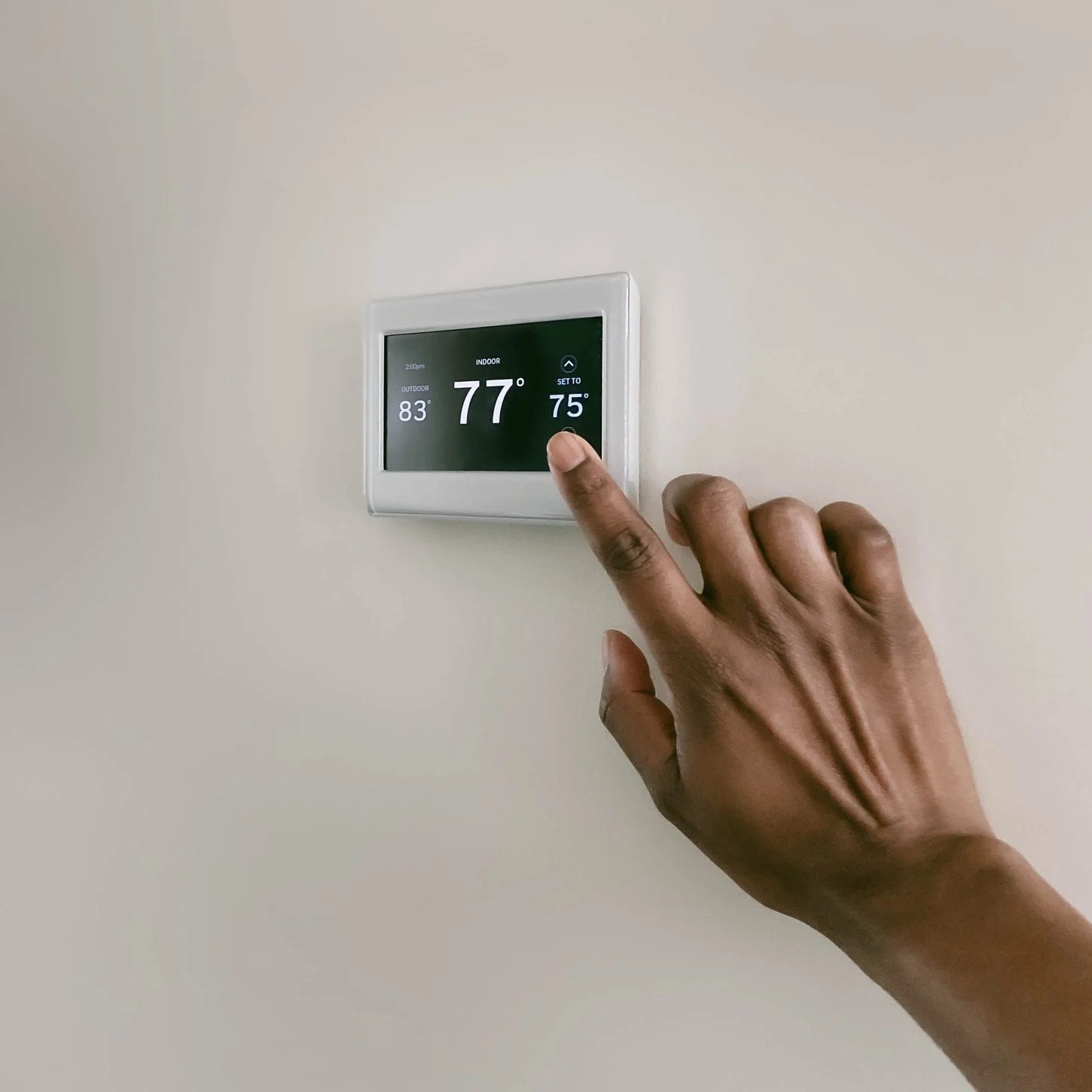
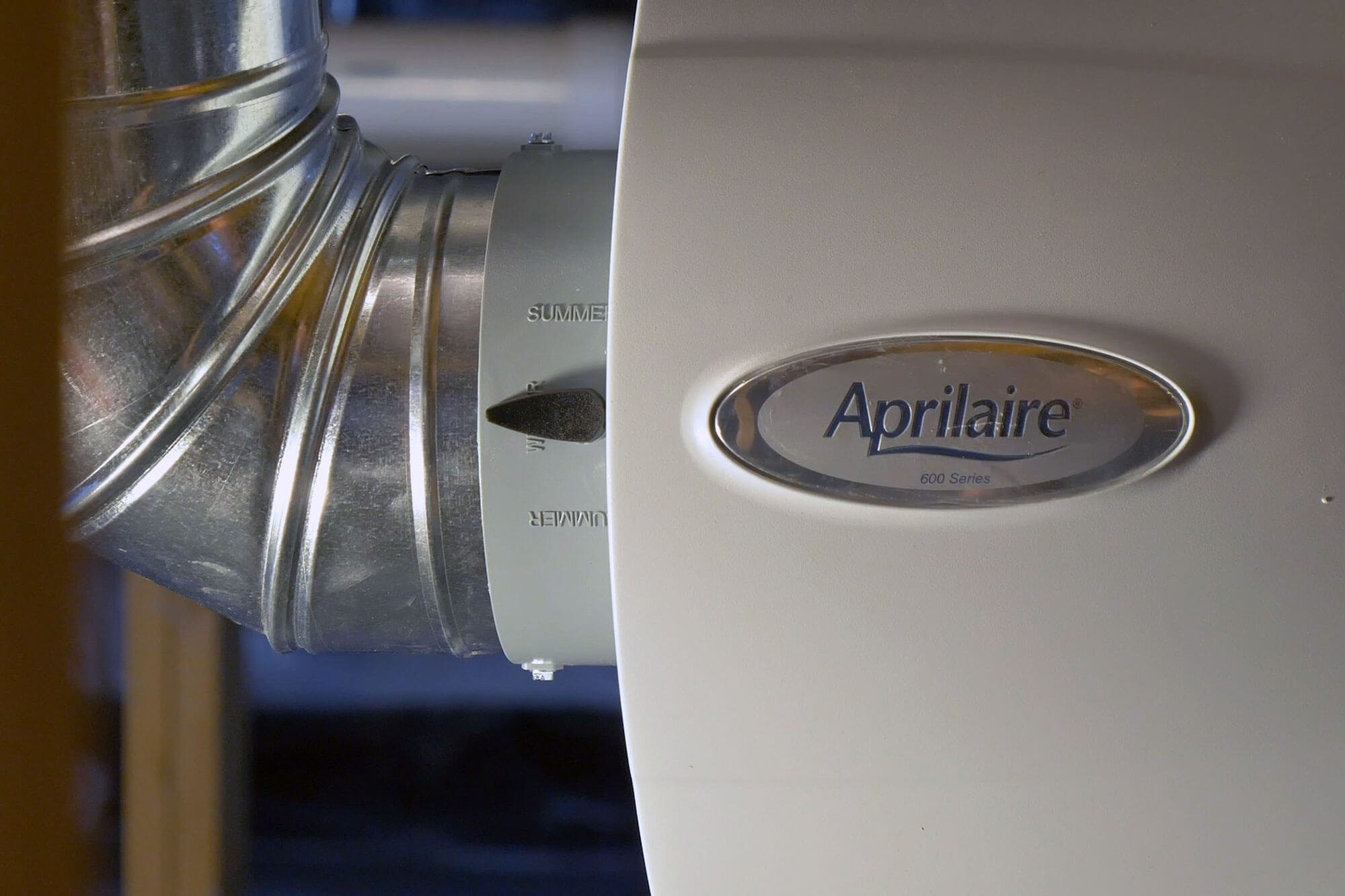
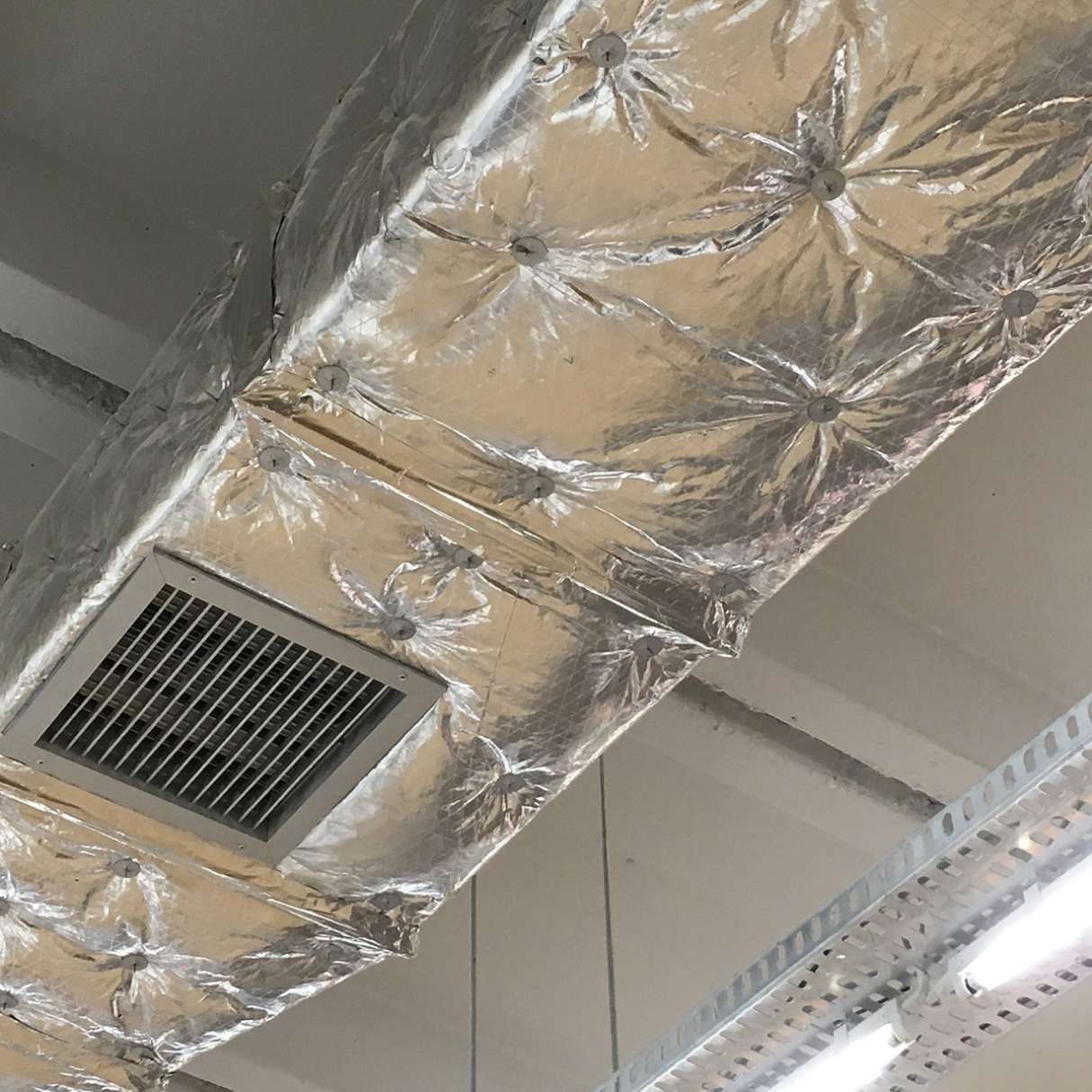
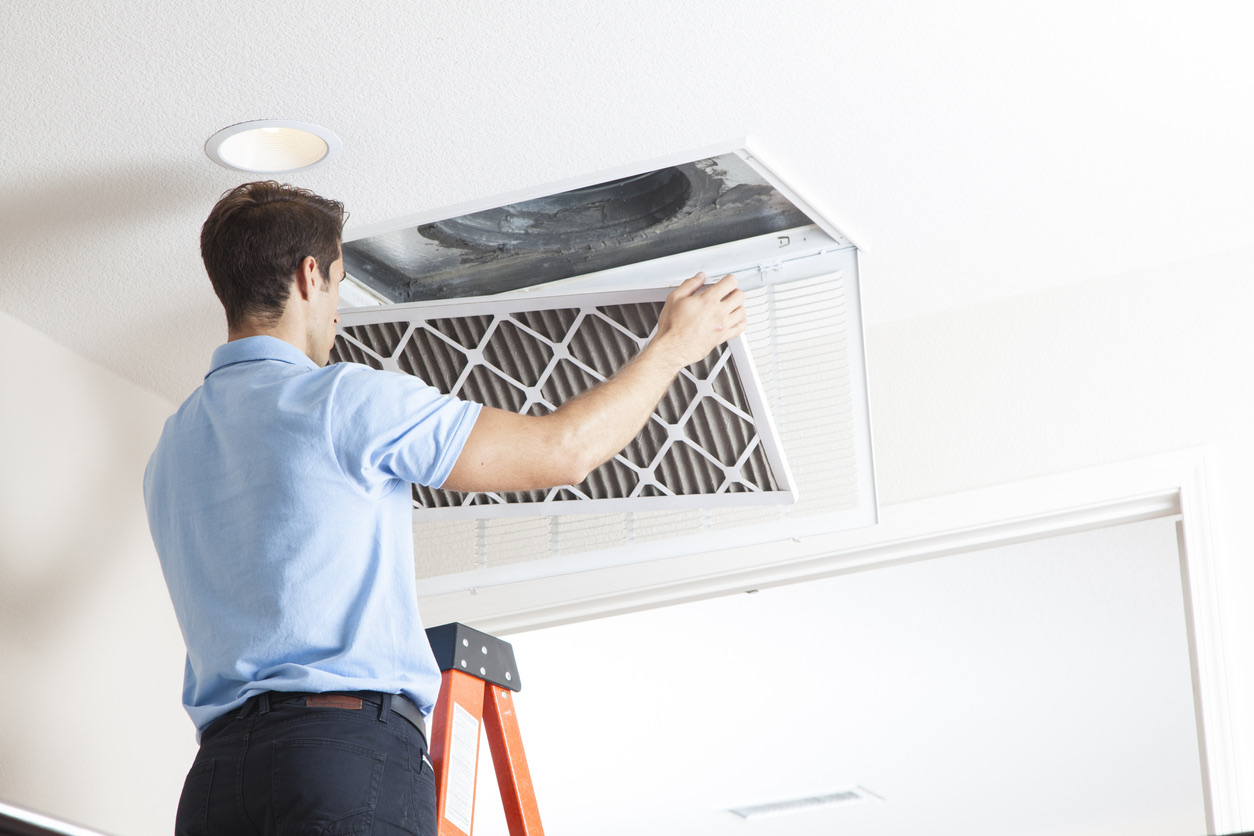
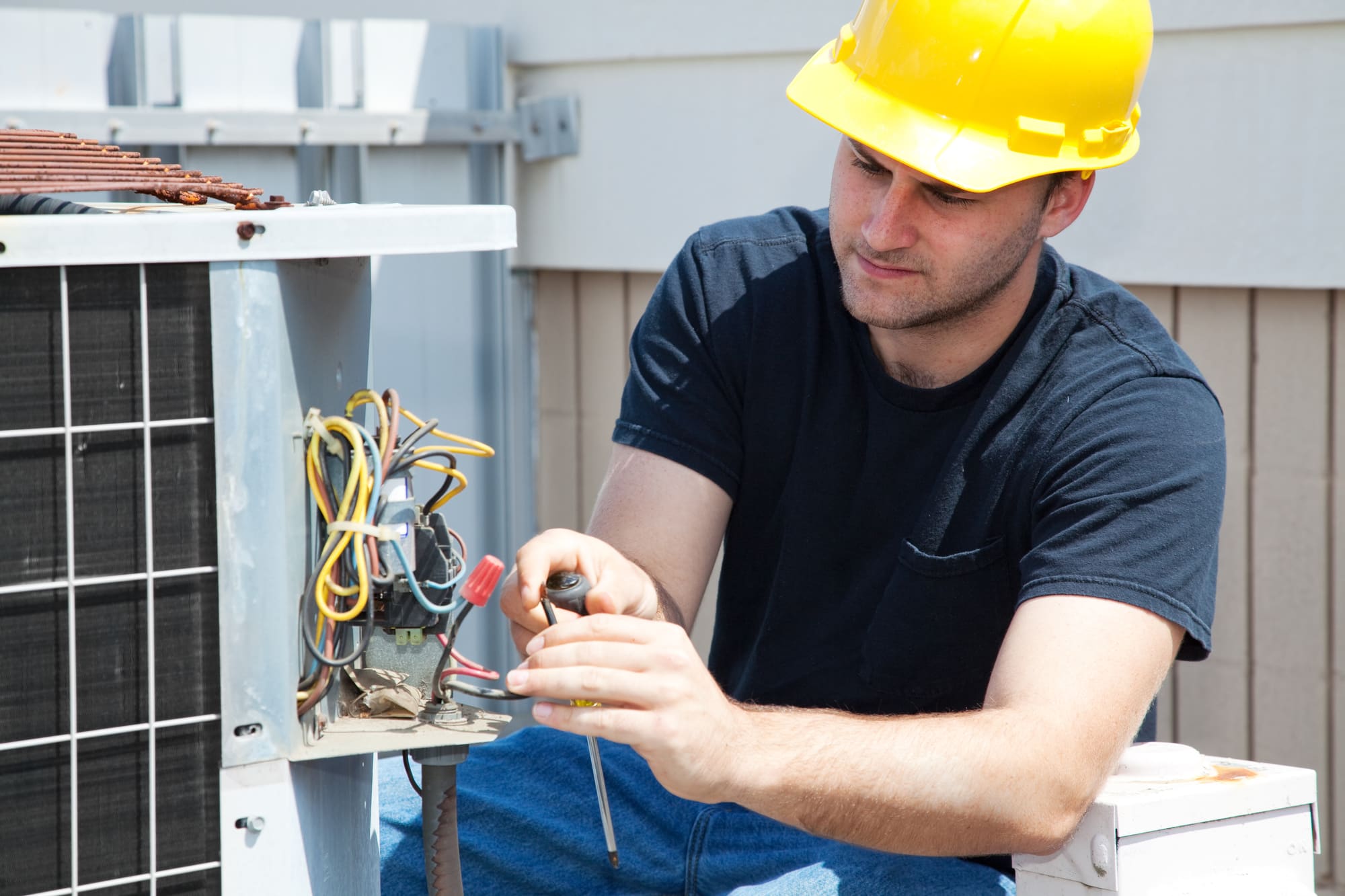


0 thoughts on “How A Chiller Works In HVAC”